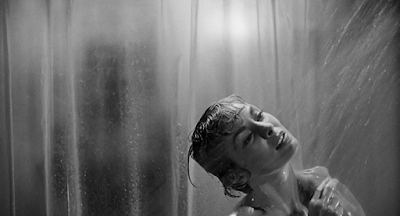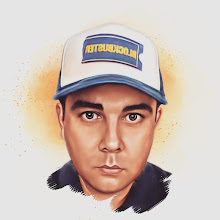 "The Last Witch"
"The Last Witch"** (out of ****)
Watching the Spanish horror movie "The Last Witch" (2015) makes you realize just how influential "The Blair Witch Project" (1999) was and how it created a whole new sub-genre of horror movies - the found footage movie.
To be honest, I never found "The Blair Witch Project" scary or interesting. I also didn't care for last year's sequel / reboot, "Blair Witch" (2016). I don't find the concept of the found footage movie scary in general. The gimmick is more of a distraction than anything else. The hand-held camera work is bad. The "naturalistic" acting is bad. The dialogue is bad and never comes across as natural, especially when it needs to get across certain plot details. And finally, the movies aren't scary. Listening to a group of characters talking about noises they hear in the wind is not my idea of a good time.
On the flip side though the movies are inexpensive. Young filmmakers can easily make one of these movies. You don't need well known actors to appear in them, it defeats the "this is real life not a movie" illusion. You can use natural lightening and don't have to worry if anything is properly lit. You can shot on location, like in a forest, and don't need to build sets. You don't need a musical soundtrack, so you don't have to worry about copyright laws. In general, if someone really wanted to make a movie, the found footage movie would be a cheap way to go.
This is what I thought about watching "The Last Witch", the feature-length directorial debut of Carlos Almon Munoz. Munoz, a horror movie enthusiast, is only 25 years old and 23 when he made "The Last Witch". Within itself, that's great. A young man was able to make a movie and fulfill a dream.
But does that make "The Last Witch" interesting to watch? This is essentially a rip-off of "The Blair Witch Project" in Spanish. Three young friends decide to investigate the legend of "the last witch". In 1619 six women were accused of witchcraft. They were tortured and hung, all except for one. What happened to the last witch? Our three lead characters will head out to a forest to find the home of the witch, Joanna Toy (Clara Gayo).
This part of the story is supposed to be based on fact. In Spain, in the town of Terrassa, there were witch trails, just as there were in other parts of Europe, and five women were executed. The twist to Munoz's story is there was a witch that got away.
And with this set-up we get the predictable hike in the woods, riveting shots of trees and leaves and the characters' shoes. We get the dialogue about noises in the wind but to the movie's credit, we can actually hear the noises too. There also isn't much of the "I feel strange standing here" dialogue. Where one character tells another character he has a bad feeling and can sense something is wrong. Cinematically, that isn't scary.
The problem however is the plot isn't developed enough to sustain a nearly 90 minute movie. By the end of "The Last Witch" I was more confused than anything else, questioning characters' motivations. Some of those motivations seem to come out of left field. Director Munoz doesn't offer any clues to build suspense.
There is also the issue of the characters. They do not feel complete and distinctive from one another. We follow Sandra (Paula Pier), Mario (Alfonso Romeo) and Eduardo (Jorge Gallardo). With the exception that Sandra is a woman, you can't really tell these characters apart. The movie doesn't take its time to establish them as people. The main objective of the movie is merely to place these pawns in scary situations.
The best decision Munoz makes however is we actually see the witch. We see what the lead characters are afraid of. Some won't like that decision. The idea behind "The Blair Witch Project" was, what we don't see is what scares us. But what we saw (the wind and leaves) bored me. Being able to see a villain added slightly to my involvement.
The problem becomes overkill. Munoz creates the idea of a cult that worships Joanna Toy. Members of the cult follow the three young friends in the forest. They seem to appear out of nowhere and rarely speak. The majority of the time they are figures seen at a distance. However this is done too often. I find in horror movies, less is more. The threat of the villain should always loom over the characters but you shouldn't see the villain too often. It diminishes the character and takes away from the suspense. The more times you see something, the less scary it becomes.
We see the witch too as she directly speaks to one of the characters, explaining her revenge. It may have been a better idea if the character didn't speak. Joanna's motivation for revenge is well explained by the other characters. There is no need for an additional speech from Joanna.
Munoz describes "The Last Witch" as a labor of love. It very well may have been but the movie never seems to rise above amateur level, and I don't think that was deliberate. A found footage movie is difficult to pull off. The odds are against it succeeding. When it works, as in the case of "Paranormal Activity" (2009), it can be very effective. When it doesn't work the leaves a viewer feeling unsatisfied and exposes how silly the entire found footage concept really is. Unfortunately, "The Last Witch" falls into the latter category.
The movie can currently be seen on Amazon Video, POV Horror Roku and POV Horror Amazon Fire TV.






























